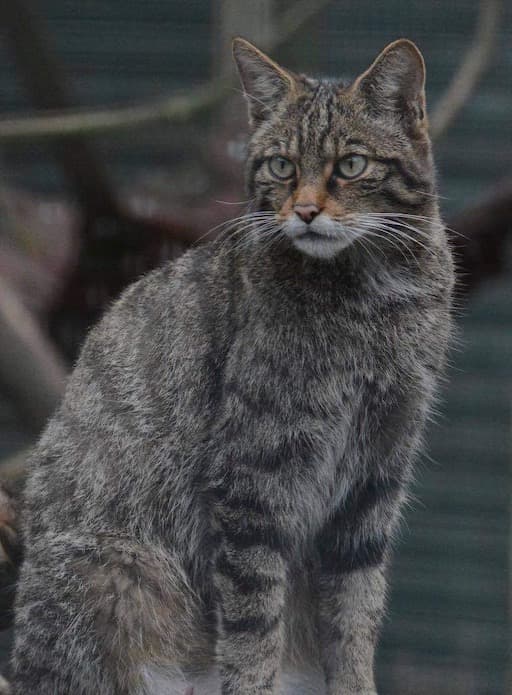Wildcats
The European wildcat is a small wildcat that is rare in Scotland but found more extensively in Europe.
In Scotland there are very few wildcats left, many of these cats have breed with feral cats and have become hybrid wildcats.
Saving Wildcats are keen to restore and add to existing wildcat populations see savingwildcats.org.uk.
Wildcats are one of our most difficult to find creatures. They are severely endangered and at risk of extinction and are a protected species. It is estimated that there may only be 100-300 left in Scotland.
The wildcat is usually larger than a domestic cat, with longer legs, has a larger head and looks more muscular and stronger. They can live for up to 8-10 years in the wild. They like to be on their own and they will mark their territories. They prefer to live on the edge of woodland in areas of mountains and moorland, with rough grazing. They avoid high mountain areas exposed coasts, and intensively farmed lowlands.
What Do Wildcats Eat?
They are fantastic stealth hunters, pouncing on their prey, often after a long wait. Rabbit is their top menu choice, but if they're not around, voles and mice would be their second choice. They have also been known to take birds, invertebrates, reptiles, and if necessary, carrion -that’s dead animals.
They use their excellent senses of smell, sight and sound to hunt, and their sensitive whiskers can pick up tiny movements.
Wildcats often create dens in rock cairns, dykes, large logging piles, and among tree roots. They also use empty rabbit warrens, fox dens and badger setts.
About Wildcats Breeding
Their main mating season is late winter (January-March). Females produce 1 litter per year in April/May. An average of 3-4 kittens are born after 63-68 days. Born blind, their eyes open after 10-13 days. They will come out of the den to play after 4-5 weeks. By 10-12 weeks old they will be hunting with their mother, and will be fully weaned by 10-14 weeks.
They will be fully independent by 5-6 months old. Male kittens will leave their mother’s territory before their first winter, and female kittens will stay in their mum’s territory during the first winter.
Emma Rawlings of Scottish Wildcat Action writes about wildcats in winter:
In winter, wildcats have long thick coats of dense fur. They are good at finding shelter in cosy dens underground or in dense vegetation.
Just like other cats they don't like being wet and will avoid deep snow if possible.
The main issue for them when its snowy is finding food. Rabbits tend to stay underground in their burrows and voles and mice make tunnels underneath deep snow. So wildcats will head further into the woods where there will be less snow, to hunt out a meal. Sometimes they will wait at rabbit warrens for a hungry bunny to pop out.
Read Emma's article in full in Wildcats in the Snow.
You can learn more about wildcats www.scottishwildcataction.org.
Find out how you can identify a wildcat try reading How Do I Know If It Was A Wildcat?

This is part of the Winter Wildllife information.